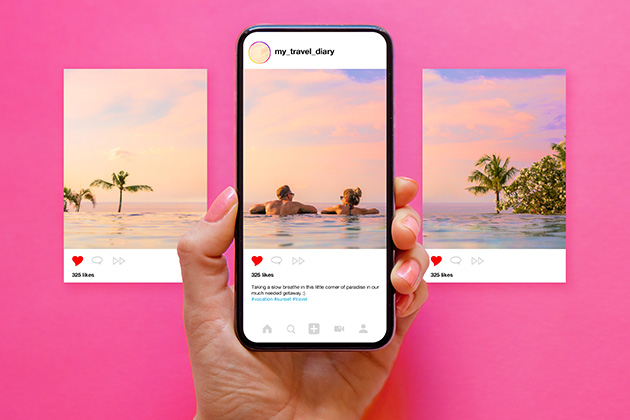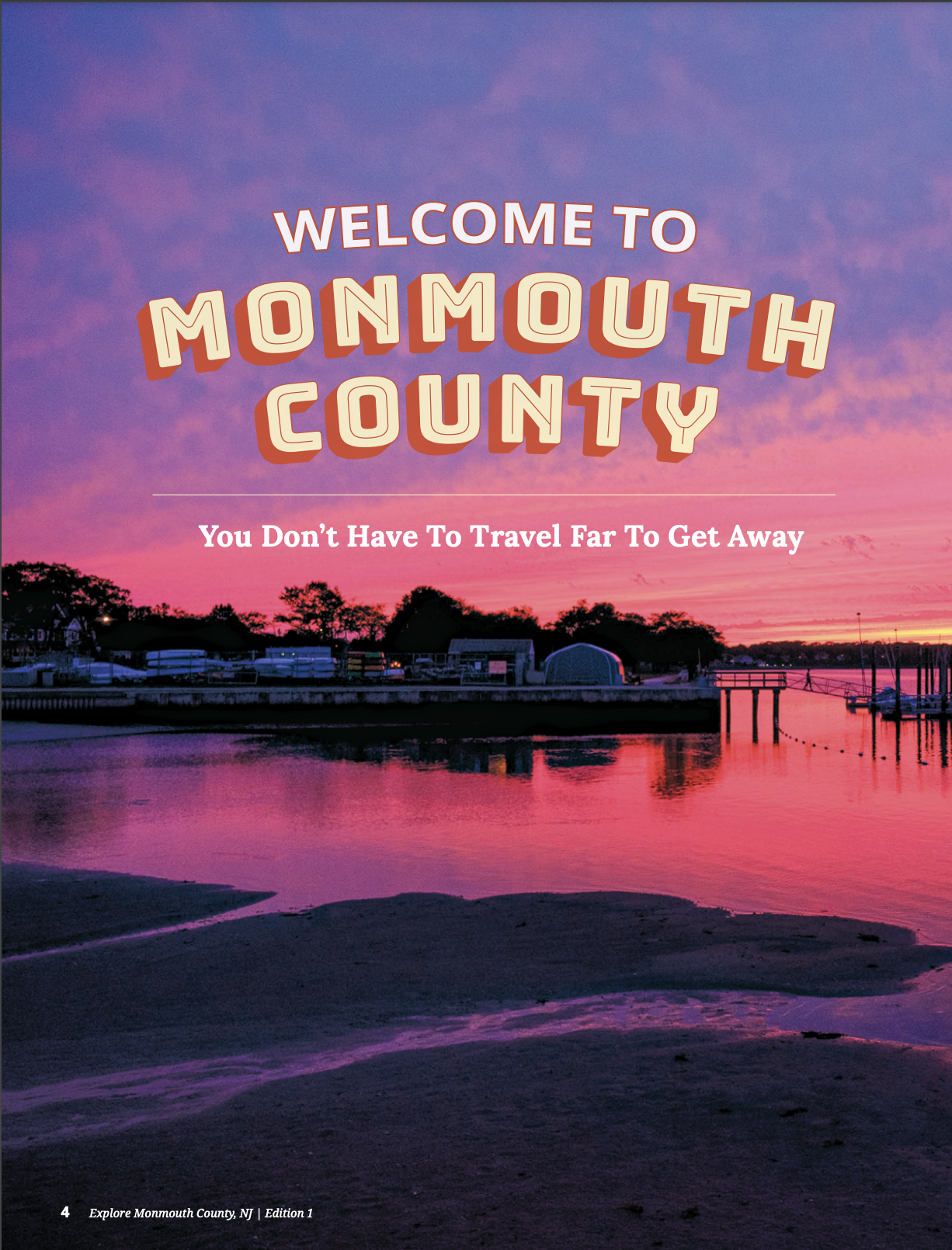So, You Want to Be Famous?
Campaign Development Steps for Lesser-Known Locations.

Miami, Cancun, Dubai, Paris: these are cities you’ll most likely see in the backdrop of your friends and family’s vacation pictures on social media. Now, imagine your town in the backdrop of those same pictures. While your town may not have the Eiffel Tower or white-sand beaches, you know it has a unique charm and personality that oftentimes gets overlooked. Instead of trying to compete and measure up to these well-known and frequently traveled locations, it may be time to proudly embrace everything unique, unknown, and even quirky about your destination.
If you're struggling to see past the comparison, we have some helpful steps and examples to motivate your team and get you prepared for the next upcoming travel season.
Step #1: Focus on What You Can Offer
Changing your mindset is key to being able to rebrand and reinvent the notions and brand surrounding your destination. Instead of focusing on what your town doesn’t have, focus on what it does. And don’t just think of it in terms of grand attractions, but in all aspects of your town, including:
- People
- History
- Businesses
- Geography
- Climate
- Traditions
- Ecosystem

The town of Zephyrhills, Florida, has started an inspirational initiative to rebrand its community and town and is a great example of what others can be doing to start their journey into creating a memorable destination experience. They see the initiative as more than just creating a fun logo and website, but rather, really bringing meaning to themselves with the input of those who live in the city. Their site sets up a platform for their research initiative in order to gain real insight and stories to create a foundation for the future Zephyrhills brand. “This effort will help Zephyrhills stand out in the marketplace as we grow toward our preferred future. Our goal is to increase interest and investment in our community from residents, entrepreneurs, companies and visitors. Currently we are conducting research inside and outside the community to uncover perceptions, attitudes and what’s unique about Zephyrhills.”
Instead of stalling and waiting for random inspiration to strike, take this town’s attitude and start by researching and collecting as much data as possible. This discovery part of your journey will help you learn more about your destination than you thought you knew.
Maybe your town has a district with a rich history. Maybe you have a local community dedicated to arts, fashion, food, or culture. Perhaps your town has a rich economy in tech, farming or some other big industry. Or perhaps you have different offerings in different seasons, such as summer kayaking vs. winter festivals. Taking advantage of those points will help you generate the ideas you need to market to potential travelers and define your target audiences.
Step #2: Define your Target Audience and Strategy
The conclusions drawn in Step #1 will determine who your target audience(s) will be as you move into Step #2. A target audience is an audience you aim to attract to your destination. However, whom you wish to attract and whom you can actually attract, often times may not line up.
If you have historic buildings, antique malls and lots of vintage vibes in your town, your target audience most likely isn’t going to be the hip-urban-nightlifer. If your town or county doesn’t have an international airport, you may not be getting a lot of foreign or outside visitors. If you have lots of free-roaming space and natural parks, posting the single shopping center in your town repeatedly on ads may actually be limiting your brand. Instead, focus on who does, can and most likely will visit your town.

Monmouth County New Jersey's slogan says, “You Don’t Have To Travel Far To Get Away.” They continually position themselves to be the go-to area for local people looking to get away from everyday life. Their virtual travel guide includes lots of day/weekend-type activities and simple yet exciting attractions all throughout their county. They celebrate their small-town businesses and events and use that as a selling point for those looking to travel on a budget and still have fun. Their location is right on the border of New Jersey and New York, which makes them a great pitstop town for many travelers going north or south. Monmouth knows exactly who their audience is and therefore knows what to offer them in regards to messaging, branding, advertising and experience.
Instead of trying to attract visitors that are outside of a realistic reach, utilize the demographic in your space now to reach others like them. Imagery, language and collateral types are all important when it comes to reaching and keeping your target audience engaged.
Step #3: Create a Unique and Memorable Impact
With the first two steps checked off, you now have a better understanding of who you are and who your target audience is. Now, it’s time to connect the two with a launch strategy and campaign. This is often the trickiest part: how can I get the most attention, but most importantly, the most memorable attention? After all, people don’t necessarily run to book a flight to your destination right after they see an ad for it. They remember your ad later down the road when vacation season comes around.

Visit Vilnius decided to tackle their greatest struggle – lack of awareness – by simply embracing it and adding humor (after all, the best way to beat a negative is with a positive). Vilnius came up with a hilarious campaign, called “The Vilnius Belated Birthday E-Card Collection,” in which you could send a vintage-style digital birthday card to the often overlooked and forgotten city to celebrate its 700th birthday. By adding an 80s theme to their video ad, it introduced nostalgia and cringe at the same time, which made the audience both reminisce and laugh. The YouTube video now has over 1.7 million views. In a previous blog, we talked about how Nebraska also tackled a negative stereotype, with its new witty slogan, “Honestly, it's not for everyone.”
Both are memorable because they’re humorous, different and even a bit sarcastic. Most importantly, these campaigns define the personality of the city or destination. They show more than just surface-level, stock-style photos; they capture a more personable and unexpected side of the destination. When coming up with a campaign, try to think about the vibe, energy and personality of your destination. Is it upscale, friendly, rigid, etc.? How can you tackle a negative stereotype in a more positive way? What is something most people don’t know about you already? All these questions can lead you to a memorable and impactful campaign that breaks through and stands out from overdone and overused tourism strategies and messaging.
So, you want to be famous? Or at least looking to increase your foot traffic and overall tourism impact? Well, you have to start by being real—be yourself! What separates hot cities like Miami, Dubai and Paris is what makes them different from the rest of the world. Focus on those unique parts of your destination and work to highlight them more often. Once you highlight what makes you different, then you can work to sustain and grow the audience that is looking for the things you have to offer. Why are people visiting your city? If the answer is something different than what you thought, don’t automatically dismiss it, but make an effort to highlight that in your materials to further grow that audience. Finally, overcome challenges with creativity and personality! Don’t be scared to showcase the unknown or unexpected in a unique way; it may strike curiosity that leads to exploration. Only by trying new things can you truly discover what methods of marketing work best for your destination’s brand, and by receiving helpful feedback you can continue to refine your approach.
Looking to develop and refine a new campaign strategy or execution? Contact our Chief Business Development Officer, John Albert, at john@herrmann.com to see how Herrmann can help your DMO brand today.


